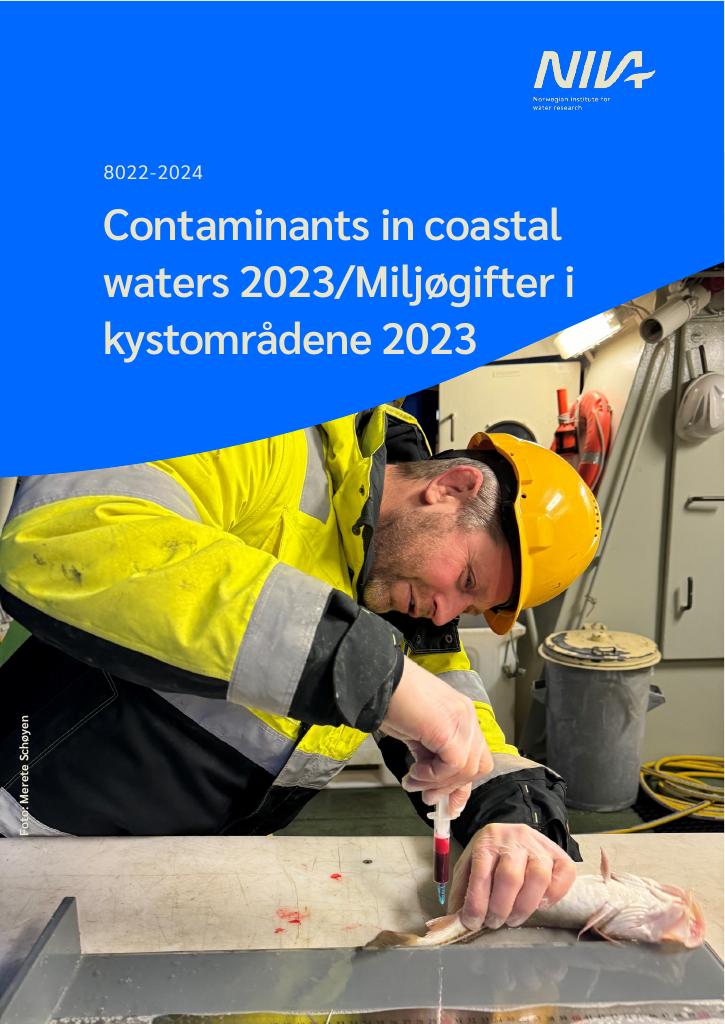Kartlegging
Contaminants in coastal waters 2023/Miljøgifter i kystområdene 2023 : M-2854
The Norwegian environmental monitoring programme “Contaminants in coastal waters” (Miljøgifter i kystområdene - MILKYS) examines the levels, trends, and effects of contaminants annually in biota along the Norwegian fjords and coastline including Svalbard. The 2023 investigation included analyses of more than 180 different contaminants or biological effect methods (BEM) in five species (blue mussel, cod, dogwhelk, common periwinkle, and common eider). The contaminants measured include metals, TBT, PCBs, PAHs, PBDEs, PFAS, HBCDs, chlorinated paraffins, siloxanes, and pesticides. BEM include imposex (VDSI) and intersex (ISI), PAH-metabolites, ALA-D, and EROD. In this report, 37 contaminants and in addition, BEM were chosen for in-depth presentation. EQSs (Environmental Quality Standards) were exceeded in blue mussel (21 %), cod (36 %) and common eider (25 %) expressed as datapoints (contaminants x stations). Contaminants above EQSs were mercury (Hg), sumPCB7 and sumBDE6. The sum of exceedances (sum of risk quotients) was highest in cod from the Inner Oslofjord. PROREFs (Norwegian provisional high reference contaminant concentrations) were exceeded in blue mussel (42 %) and cod (15 %) expressed as datapoints (contaminants x stations), and exceedances were higher in mussel (up to >20x PROREF) than for cod (5-10x PROREF). The sum of PROREFratio above background levels were highest in blue mussel from Gressholmen followed by Akershuskaia in the harbour of the Inner Oslofjord. Significant downward time trends for specific contaminants/effects dominated both recent (≤ 10 years) and whole period (>10 years) where trends could be statistically detected, still some significant upward trends were observed for contaminants exceeding EQS and/or PROREF. A recently published OSPAR method was used for trends, and the highest occurrence of upward whole and recent trends were found for blue mussel in the Inner Oslofjord, and for cod at Lista and Sandnessjøen. BEM (biomarker analysis) showed no effects of TBT in snail but confirm exposure of PAH and lead in cod. Cod health parameters varied among stations, with lowest rank (lowest health condition) in cod from the Inner Oslofjord
Publisert
Eier
Norsk institutt for vannforskning
Mottaker
Miljødirektoratet
Forfattere
Merete Schøyen, Merete Grung og Espen Lund
Språk
engelsk
Kilde
ISBN
9788257777593
